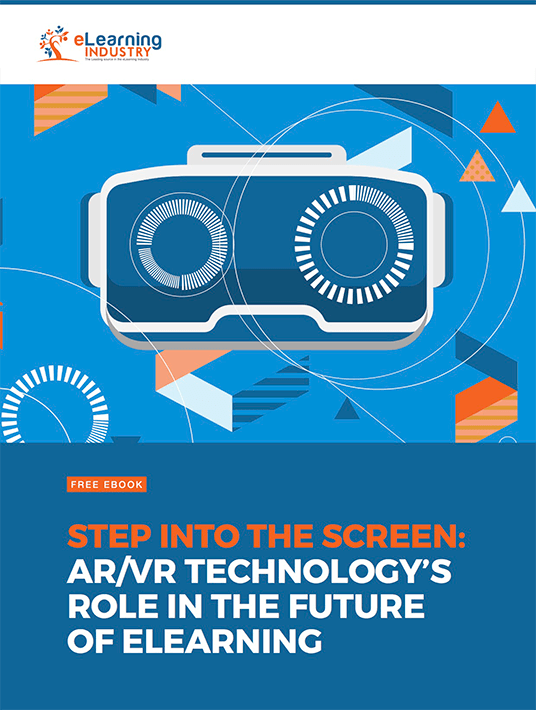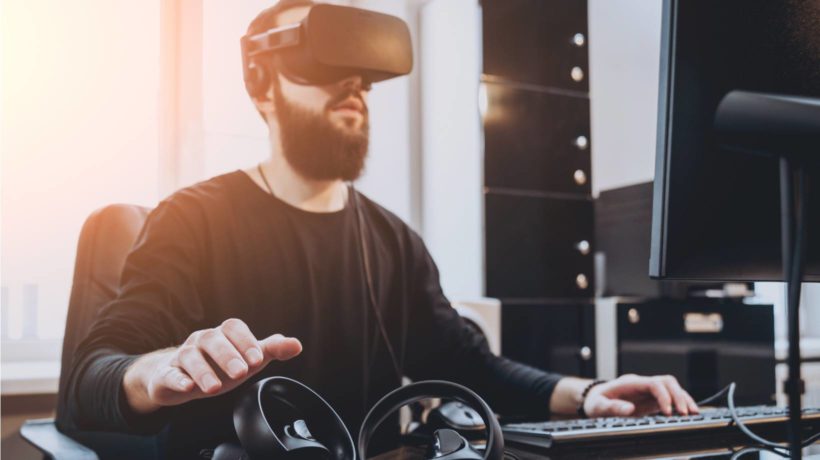What To Avoid When Integrating AR/VR Into eLearning Courses
We aren’t always ready for a lot of the technology that enters our lives, especially at high speeds. It takes time to figure out how to reap the rewards and apply them to our work practices. Figuring out the ethics, optimization, psychological/physical dangers, and cultural effects is a gradual process. One of the emerging tech trends in the eLearning industry is alternate reality. Here are 5 tips to avoid the most common pitfalls when integrating AR/VR into eLearning courses.

1. Technology Is A Learning Aid, Not Learning Itself
A major pitfall of all tech-involved endeavors is going overboard. For example, Hollywood blockbusters that are a bit heavy-handed with special effects tend to flop at the box office. People are still looking for realism, even when it comes to sci-fi and fantasy. The same rules apply to eLearning. Overdoing it tends to happen when a technology is fairly new and carries with it a sense of novelty. But it can spell disaster for your eLearning content and its educational value. In the case of eLearning, the goal is to convey ideas and build vital skills. Thus, it’s important to remember that Augmented/Virtual Reality are merely tools to achieve these objectives. Their success is determined by how much they help the delivery of eLearning content and enhance the value of the eLearning experience. Many eLearning courses nowadays spend a lot of effort on Augmented and Virtual Reality at the cost of the eLearning content.
- Tip: Don't rely on AR/VR to add quality to your eLearning course. They can only help if the eLearning course is well designed, to begin with.
2. Importance Of Writing And Expression-Oriented Learning
When designing the eLearning course, it’s wise to innovate without trying to reinvent the wheel. One of these great wheels in learning is the written and expressive aspect. Online learners must be able to demonstrate their knowledge and skills in a practical context. In fact, reproducing and practicing what has just been learned can help cement the information. We all begrudge examinations and the performance side of learning. However, they are necessary to test comprehension and reinforce key concepts. No matter how advanced technology becomes, basic learning techniques are still an integral part of the process. In other words, Augmented and Virtual Reality are not substituting for Instructional Design theories, ideologies, or models.
3. Clarity Of Purpose Behind Every Design Decision
When you decide to integrate AR/VR into your eLearning course, you’ll need to develop a purpose declaration. What are the aims and learning objectives of the eLearning course? What does the online learner need to know by the end of the eLearning course? How does this eLearning course contribute to the online learner’s life and intellect? Once you have a clear agenda and a set of goals, you can make better tech decisions and incorporate AR/VR wisely. For example, determine how each AR/VR activity facilitates the aims and learning objectives or obstructs them. An alternative reality activity may be "cool", but does it really reinforce core concepts and help online learners achieve the learning goals?
- Tip: Chart out the learning objectives of the eLearning course first, and then see how AR/VR can help meet those aims and learning objectives most effectively.
4. Augmented And Virtual Reality Are Supposed To Make Learning More Accessible
Why do you want to integrate AR/VR into your eLearning course? Here are some common answers: Trainers want to make learning easier. They want to make it more fun, enhancing its appeal. They want to enrich and expand the possibilities that the eLearning course can offer. These are all valid motivations for integrating AR/VR in eLearning. However, it’s impossible to achieve any of these benefits without accessibility. What would be the point of integrating AR/VR if the eLearning course becomes less user-friendly? It would become an obstacle to the learning process rather than aiding it.
Here are 2 golden rules for integrating AR/VR in eLearning:
- Make sure that the AR/VR is user-friendly, self-explanatory and easy for people with different tech skills. For example, those who aren’t tech savvy.
- Online learners should never ponder whether the AR/VR part of the eLearning course is actually necessary or just a cool tech gimmick. Remember, the purpose of AR/VR in eLearning isn’t to impress, but to impart information.
5. Alpha Comes Before Beta
In the Greek alphabet, alpha comes before beta. Alpha means the first, the best! But you can’t be the best until you’ve actually had a chance to test out what you’ve made. You must test drive the eLearning course yourself and enlist the aid of volunteers, friends, family, or colleagues. If you aren’t satisfied with what you’ve designed, how can you successfully introduce it to others? Conduct some user testing to ensure that your new AR/VR tech supports the desired outcomes and is easily accessible. You can even conduct some Alpha/Beta testing to try out different versions of the eLearning course, which allows determining how to integrate AR/VR that reinforces knowledge and caters to diverse learning preferences.
AR/VR technologies will play a significant role in the future of L&D, no arguing there. Yet, it is up to us how we make use of all these smart technologies and cutting-edge gadgets. Ultimately, alternate reality tools should help online learners connect with the eLearning content and immerse real-world situations, not serve as a distraction that prevents them from absorbing the key takeaways. Use this article to avoid the most common pitfalls and integrate AR/VR activities that enhance the value of your eLearning course.
What is AR/VR’s true potential for online training? Download our free eBook: Step Into The Screen: AR/VR Technology's Role In The Future Of eLearning to see what the future holds for VR and AR in eLearning. We’ll also highlight alternate reality activities you may want to add to your microlearning online training library, and provide a step-by-step walkthrough for developing AR/VR resources for your eLearning course.









